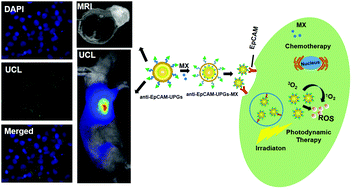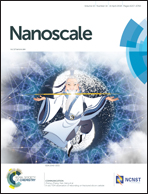Theranostic micelles based on upconversion nanoparticles for dual-modality imaging and photodynamic therapy in hepatocellular carcinoma†
Abstract
Hepatocellular carcinoma (HCC) is frequently metastatic once diagnosed and less likely to respond to curative surgery, emphasizing the need for the development of more sensitive and effective diagnostic and therapeutic strategies. Epithelial cell adhesion molecule (EpCAM) is deemed as the biomarker of cancer stem cells (CSCs), which are mainly responsible for the recurrence, metastasis and prognosis of HCC. In this study, we discuss the use of mitoxantrone (MX), an antitumor drug and a photosensitizer, for designing upconversion nanoparticle-based micelles grafted with the anti-EpCAM antibody, for dual-modality magnetic resonance/upconversion luminescence (MR/UCL)-guided synergetic chemotherapy and photodynamic therapy (PDT). The obtained micelles exhibit good biocompatibility, high specificity to HCC cells and superior fluorescent/magnetic properties in vitro. In vivo results demonstrate that the targeted micelles exhibited much better MR/UCL imaging qualities compared to the nontargeted micelles after the intravenous injection. More importantly, PEGylated UCNP micelles loaded with MX and grafted with anti-EpCAM antibody, denoted as anti-EpCAM-UPGs-MX, showcased the most effective synergetic antitumor efficacy compared with other treatment groups both in vitro and vivo. The remarkable antitumor effect, coupled with superior simultaneous dual-modality MR/UCL imaging as well as good biocompatibility and negligible toxicity, makes the UPG micelles promising for future translational research in HCC diagnosis and therapy.



 Please wait while we load your content...
Please wait while we load your content...